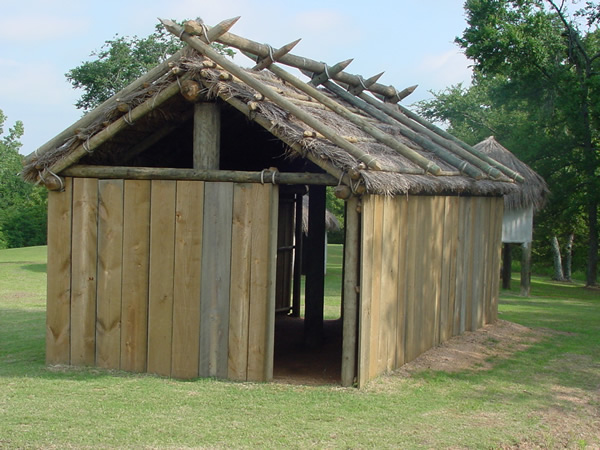
A traditional Chickasaw town consisted of many households that were commonly situated on large bluffs or high hills for greater visibility of enemies or invaders, in addition to protecting houses from spring floods. Each town contained winter houses, summer houses and corn cribs (food storage buildings). Some towns were reported to have numbered more than two hundred households. In addition, each town was frequently surrounded by defensive structures called palisade forts made of large log posts set vertically into the ground. Stickball grounds (commonly referred to as ball fields) were also present in these villages. Finally, a council house was enclosed in a Chickasaw village for the purpose of discussing significant affairs or to make decisions on issues that came before the council, or revered Chickasaw male elders and well-respected elder females. Each town was complex, complete with social, cultural, political and agricultural organizations that supported and sustained the dynamic workings of each town.